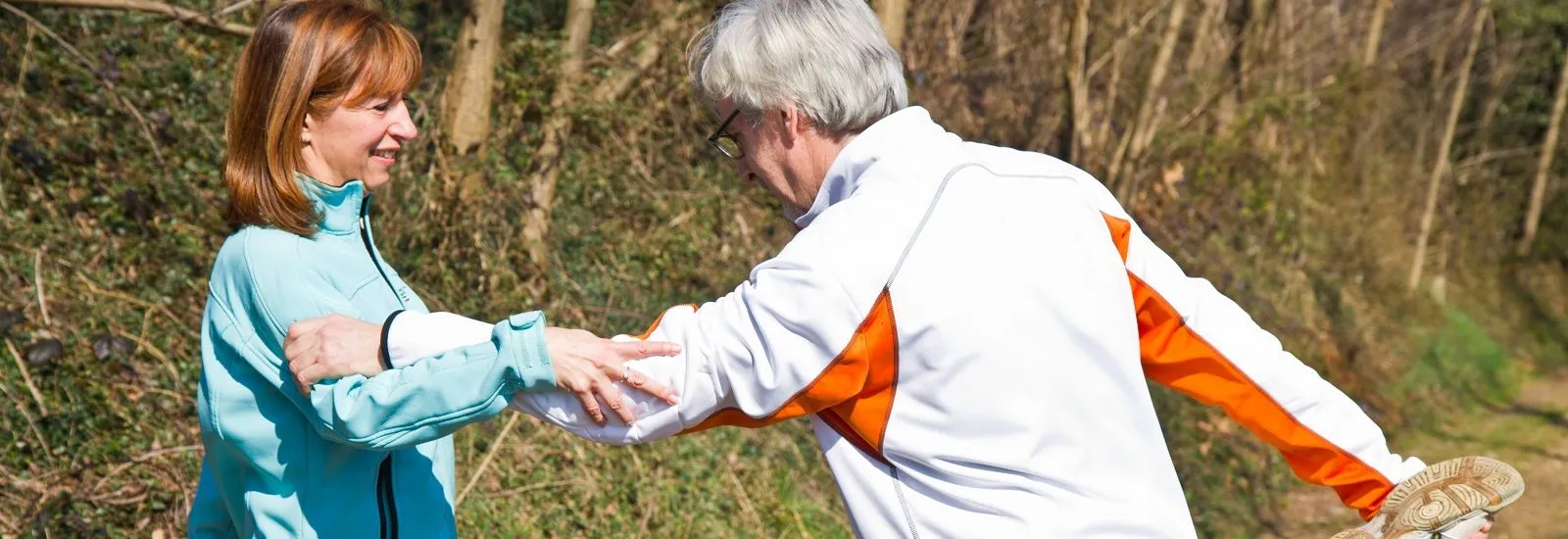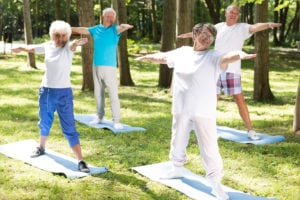
Exercise tips for healthy joints
As we age we tend to become less physically active. Sometimes this happens because we experience joint pain and movement becomes more difficult and unpleasant. However the less you use your joints the more uncomfortable they tend to become — creating a downward spiral of inactivity and pain. This cycle continues because the muscles and cartilage that support the joints weaken with disuse. Healthy joints need to move — and movement helps create healthy joints.
 The good news is whether you struggle with joint pain or just want to keep your joints as healthy as possible there are simple things you can do now to keep them limber.
The good news is whether you struggle with joint pain or just want to keep your joints as healthy as possible there are simple things you can do now to keep them limber.
Start out easy
First things first consult your health care provider before beginning any exercise program. Choose something you enjoy doing and that’s suited to your current state of health. If you have joint pain or are just out of shape start things off easy. Pushing yourself too hard when you’re not ready may result in injury and discourage you from maintaining an exercise program long-term.
Here are a few exercise options for gradually building up healthy joints:
Yoga – Yoga is a low-impact form of exercise that involves stretching and correct breathing. It poses little chance of injury to joints and offers the added benefits of relaxation and improved mental focus. There are many types of yoga. Some types are good for people with arthritis and other types that offer a more vigorous workout. Do your research. Take a class that’s right for you or consider private yoga lessons that are specifically tailored to your physical capabilities.
Water aerobics – The ultimate low-impact workout this type of exercise builds balance and joint strength while offering the gentle resistance of the water. It’s especially good for people recovering from an injury or surgery. Because this form of exercise is usually done in a class there’s a social aspect too. Water aerobics classes are frequently offered at local recreation centers.
Basic stretching – For sedentary people or those who sit at a desk all day taking a stretch break can do wonders for reducing stiffness and pain even if it’s only for a few minutes each day according to the Arthritis Foundation. Stretch calves and hamstrings; raise each leg while sitting and hold it for a count of 30; march in place for a minute; or make backward arm circles. Many stretching exercises can be done in a sitting position or even while lying down.
Once you build joint strength you may want to consider more vigorous types of exercise such as walking elliptical training biking dancing or golf.
The right technique
Of course it’s not just about what you do; it’s about how you do it. Here are a few tips for approaching exercise in a way that’s safe and healthy for your joints.
Warm up – Professional athletes need to warm up first and so do you particularly if you’re doing anything even a little bit strenuous. Giving your joints and muscles some time to loosen up will make you less prone to injury.
Wear the right shoes – Good footwear will support your feet and ankles and put less stress on your lower body overall. Depending on the activity the proper shoes not only protect you but they can also improve your comfort and performance.
Avoid high-impact – Running can place a lot of stress on the knees and ankles particularly if you’re overweight. Avoid stomping your feet or working out on a hard surface like pavement.
Change up your routine – Doing the same type of exercise over and over can put too much stress on some joints while ignoring others. Switch up your exercise regimen or choose something that uses more of your whole body like dancing or swimming.
Keep it moving
Of course consistency is key to any exercise program. If you start out easy and build up the tissues supporting your joints will get stronger and you’ll be able to do more for longer periods. Take it gradually but be consistent. You may be surprised at how much stronger you feel and how those aches and pains seem to diminish with time.
Talk to your doctor about the best exercise program for your current fitness level and specific physical needs.

